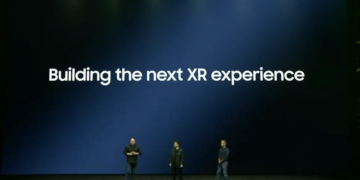The virtual reality (VR) sector is experiencing massive growth as tech giants pour in significant investments, betting on its potential to revolutionize digital experiences. Once limited to gaming, VR is now expanding into education, healthcare, e-commerce, and beyond.
Leading Companies Investing in VR
1. Meta – The Metaverse Gamble
Meta (formerly Facebook) has allocated over $100 billion for metaverse development through 2030, focusing on:
- Advanced Quest 3 and Quest Pro VR headsets.
- Haptic feedback enhancements for realistic interactions.
- A robust ecosystem for education, virtual meetings, and digital commerce.
2. Apple – A Strong Entry into VR/AR
Apple has invested over $20 billion in its Apple Vision Pro headset, aiming to:
- Enhance gesture-based control, minimizing reliance on traditional controllers.
- Integrate AI-driven interactions for a smoother user experience.
- Cater to business, productivity, and content creation.
3. Google & Microsoft – Competing in VR Innovation
- Google is advancing VR web technologies via “Project Starline,” enabling lifelike 3D video calls.
- Microsoft is pushing VR for business and education, with its HoloLens used in medical and engineering sectors.
Key Industries Benefiting from VR Investments
1. Gaming & eSports
- Companies like Sony, Valve, and Meta are investing billions in VR gaming, with titles like Half-Life: Alyx and Resident Evil VR.
- The rise of metaverse gaming and NFT-based assets is reshaping the industry.
2. Healthcare & Medicine
- VR is revolutionizing medical training and remote surgeries, offering realistic simulations.
- Companies like Osso VR and Augmedics are receiving substantial funding for VR-driven surgical advancements.
3. Education & Training
- VR is a key tool in digital learning, with institutions like Stanford and Harvard implementing 3D learning experiences.
- Platforms like Engage VR are building interactive educational environments.
4. E-Commerce & Virtual Shopping
- Retailers like Amazon and Shopify are investing in VR-powered shopping experiences, allowing users to try products before purchase.
- VR enhances customer engagement and conversion rates with immersive previews.
Challenges Facing VR Investments
Despite massive investments, VR adoption faces hurdles such as:
- High device costs, limiting mainstream accessibility.
- Need for high-quality VR content to sustain user interest.
- Computing power demands, requiring robust hardware for optimal experiences.
The Future of VR: Where Is It Headed?
With continued investment, the VR industry is projected to surpass $500 billion by 2030. Advancements in wireless VR and AI integration will make the technology more seamless and accessible.
Conclusion
VR is no longer just a gaming technology—it’s a serious investment frontier spanning multiple industries. As tech giants drive innovation, the coming years will witness unprecedented growth in digital interactions.






